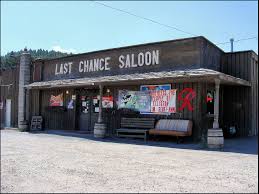 Image by Billy Meinke Attribution 4.0 International / CC BY 4.0
Image by Billy Meinke Attribution 4.0 International / CC BY 4.0
During the final two weeks of February, I spent time with the research team at the OER Research Hub at The Open University, Milton Keynes, UK. Supported by the Hewlett Foundation, the fellowship program brought in researchers working on OER-related projects whose work aligns with the hypotheses put forth by the OER Hub. My own work involving the U.S. Dept. of Labor Trade Adjustment Assistance for Community and Career Training (TAACCCT) program, widely noted as the largest investment in OER-production to date, aligned with the research areas of the OER Hub. Through many planned meetings (and spontaneous conversations) and in-depth explanations of how the team at the OER Hub works, I’ve gained a much better understanding of how an elite research team is tackling the fringes of Open Education policy and practice. There were far too many positive interactions and experiences had during this trip to include them all, but here are some highlights:
OER Impact Map
Rob Farrow was my direct supervisor during my stay with the OER Hub, and he also happens to be helping build the Hub’s OER Impact Map. In collaboration with Martin Hawkseye and a few others, their team is building a dynamic visualization tool for use of user-generated evidence points signifiying an OER policy or project. It’s an entirely open source project that puts to use the WordPress CMS plugin framework and some beautiful Javascript (D3, in particular), allowing the information to come to life.
The evidence map draws on information in many places, and it’s nice to see Creative Commons’ very own OER Policy Registry be a source of data for the project, too.
 OER Impact Map Attribution 4.0 International / CC BY 4.0
OER Impact Map Attribution 4.0 International / CC BY 4.0
During my stay, Rob and I discussed the state of evidence we have relating to combined groundswell (bottom-up) support and top-down policy implementation efforts around OER. There have been many instances where OER polices have been implemented, and an increasing number of campus and state-wide projects for collaborating on OER, but few that have met in the middle. OER has been funded, developed, implemented, and researched for some time now, and the OER Impact Map stands to give us new lenses with which to view what is happening with OER. One hope is that the codification and visualization of evidence around OER will help us focus on understanding where gaps should be bridged, and why successful projects are the way they are. The few brief meetings (plus continued commentary) I had with Rob over the two weeks of my stay were more than enough to plant a dozen seeds in my mind around how the field of Open Education might move forward. I’m looking forward to seeing how the Impact Map moves along.
OER & Flipped Learning
Examining what I had previously assumed to be an area of blossoming OER collaboration (but but ended up not being quite so), Bea de los Arcos and I brainstormed questions that might address the use and sharing of OER by educators who have decided to “flip” their classrooms. In my own work with Creative Commons, I have come across many types of people who have widely varying levels of knowledge about open/libre copyright licenses being an important aspect of sharing, but the Flipped Learning Network (FLN) might be a prime example of a community that already has a social and technical structure in place for collaborative OER production and reuse, highly underutilized. There are usually many interests involved with efforts like the FLN, and organizations that stand to make a profit from controlling the limited, temporary learning content are included in this case. But after all, point P.3 of the FLN’s “Four Pillars of Flip” asks practitioners to:
“…collaborate and reflect with other educators and take responsibility for transforming my practice.”
Cheers! But when will there be a concerted effort to empower the FLN community with ways to simplify and standardize the legal freedoms needed to efficiently collaborate on OER? As a reminder, OER can be described as:
“learning and research resources that are either in the public domain or have an intellectual property license that permits their free use and re-purposing by others”
Given that aspects of curriculum development and delivery of Flipped Learning involve recording learner instructional and informational content, educators have many opportunities to utilize (remix) existing open educational resources, and create content that extends beyond their classroom. Bea and I chatted about how much sharing might be happening (with or without open licensing), and she pointed me to survey work (see link, above) that indicated sharing in the Flipped Learning Network.
Over the next few months, Bea and I will be preparing a presentation on the relationship of OER and the pedagogical techniques employed by flipped learning, and how open licensing fits into the equation. It’s not hard to see that teachers are using OER, and many have shared their content online, but few have placed open licenses on what they’ve shared. If it were not only more easy to understand open licensing, but also technically-implemented in more Learning Management Systems as features (a drop-down or check box to select a license would suffice), there would be fewer barriers to co-creation and creative reuse of the content teachers are already sharing. Look back to this blog to keep up with our findings and others coming out of the OER Hub.
Battling for Open
The idea of what it means to be “open” had never weighed more heavily on my mind than during the time I spent visiting the OER Hub at The OU. Though I had met the talented Beck Pitt at Mozfest back in October, and had connected with most of the OER Hub team on Twitter before coming over, Martin Weller was the first member of the team that I met with. As someone who always seeks to better understand the open education community at large, I was happy to get Martin’s one-on-one explanation about how The OU and a number of other UK-centered components of the Open Education movement connect. The Open University, established in 1969, was an early provider of higher education opportunities for adult learners via distance education methods (correspondence, audio/video when available). The OU has also weathered the emergence of the web and new technology of the 90s’s and 2000’s, and it’s not hard to see that the establishment’s longstanding commitment to providing access to education is worth the recognition of anyone in the field of open education.
 But alas, as Martin and many others have begun to chant in unison, current debates over the specifics of what it means to be “open” are being made possible by one thing: openness has already won. The Open Access community, which seeks to make the results of publicly funded research available to the public, has experienced a similar shift. You’re now more likely than ever to walk into a discussion about which copyright licenses actually make an OER an OER, or stumble upon an equally-charged debate about which open access mandate makes sense for which subset of researchers who publish. Just a few years ago, you might not have as easily found a discussion that addresses the nuances and granularity of OERs and openness. We couldn’t be having these conversations unless “open” had won the initial battle. Now, it is more a matter of how education (and science, and culture, etc) begin to scale with openness providing a foundation for sharing and reuse, which may lead to better use of public funds, accelerated innovation…and many of the other benefits that openness promises.
But alas, as Martin and many others have begun to chant in unison, current debates over the specifics of what it means to be “open” are being made possible by one thing: openness has already won. The Open Access community, which seeks to make the results of publicly funded research available to the public, has experienced a similar shift. You’re now more likely than ever to walk into a discussion about which copyright licenses actually make an OER an OER, or stumble upon an equally-charged debate about which open access mandate makes sense for which subset of researchers who publish. Just a few years ago, you might not have as easily found a discussion that addresses the nuances and granularity of OERs and openness. We couldn’t be having these conversations unless “open” had won the initial battle. Now, it is more a matter of how education (and science, and culture, etc) begin to scale with openness providing a foundation for sharing and reuse, which may lead to better use of public funds, accelerated innovation…and many of the other benefits that openness promises.
Early Reflections
If nothing more, I left The OU with a less firm definition of openness in education than I had when I walked in. And I think it’s a good thing. The connections made and interactions had during my stay at The OU will not soon be forgotten, and I’m very much looking forward to keeping up with research developments made by the team at the OER Hub, and collaborating with them as we move forward together in our joint pursuits of understanding and opening up education.
My album of photos from my stay at The OU can be found here: https://www.flickr.com/photos/67338640@N04/sets/72157641278468125/
Many thanks to Simone, Natalie, and the whole crew at The OU for their commitment to providing opportunities for collaboration and growth between fellows and the team at the OER Hub.






Reblogged this on Billy Meinke and commented:
Here are notes about some of the people and projects I had the fortune of working with during my stay as a fellow of the Open Educational Resource Research Hub at The Open University, UK.